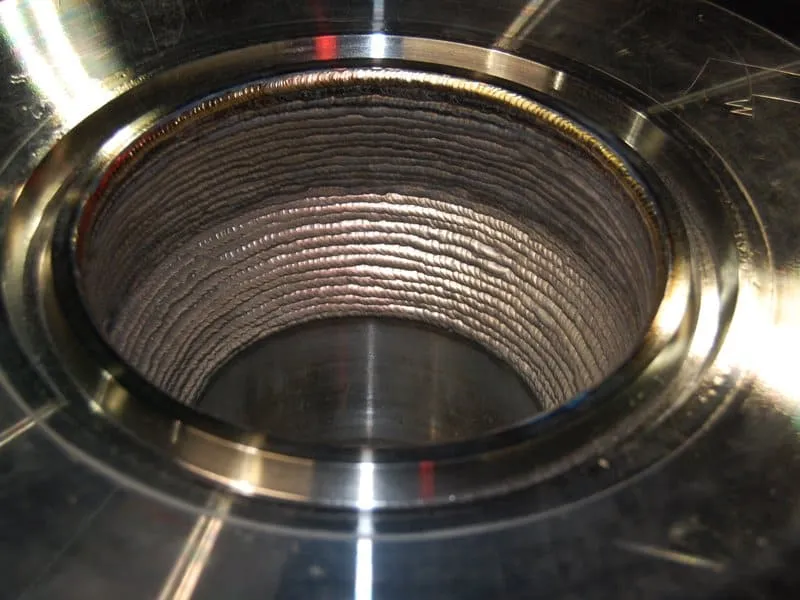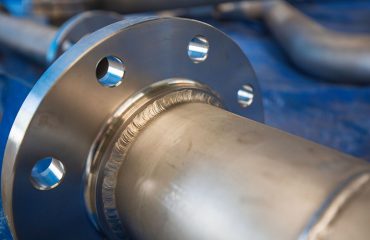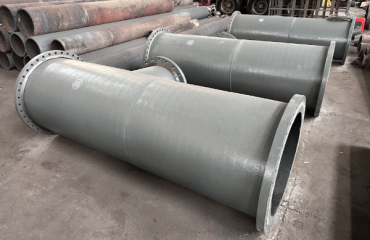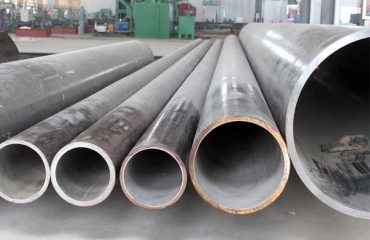
First, I should start with an overview of what pipe cladding is. Then list the common methods like weld overlay, explosion bonding, roll bonding, etc. The user might be looking for a step-by-step explanation of each method.
Wait, in the previous answer, I briefly covered how cladding is applied. But now they’re asking specifically for the process. I need to elaborate more. Maybe structure it by method, explaining each one’s steps. Also, mention preparation steps and quality checks involved.
Including the purpose of each method and their applications would help the user understand when a particular process is used. For example, weld overlay is versatile, explosion bonding is for thick layers. The user might be deciding which method to use for their project.
Also, the user might be interested in the sustainability aspect again, so maybe touch on how the process contributes to that. But the main focus is the process itself. Need to ensure technical terms are explained but not too jargon-heavy. Use bullet points or numbered lists for clarity.
Check if there are any other methods beyond the ones mentioned before. Thermal spray and laser cladding were mentioned in the previous answer. Should I include those as advanced techniques? Yes, to show a comprehensive view.
Finally, summarize the key benefits of the cladding process, tying back to why it’s necessary. Make sure to answer not just the ‘how’ but also the ‘why’ behind each step. That should cover the user’s query thoroughly.
Pipe Cladding Process
Pipe cladding is a manufacturing technique that bonds a Corrosion-Resistant Alloy (CRA) layer to a base material (e.g., carbon steel) to create a composite pipe. The process ensures a metallurgical bond between layers, combining strength and corrosion resistance. Here’s a detailed breakdown:
1. Preparation of Base Material
- Surface Cleaning: The base pipe (e.g., carbon steel) is cleaned via sandblasting, grinding, or chemical treatment to remove rust, oil, or contaminants.
- Preheating: For certain methods (e.g., weld overlay), the base pipe is preheated to reduce thermal stress and improve bonding.
2. Cladding Methods
The CRA layer is applied using one of these key techniques:
A. Weld Overlay
- Process: CRA material (in wire or powder form) is deposited onto the base pipe using welding techniques like:
- Submerged Arc Welding (SAW): High deposition rate for thick layers.
- Gas Tungsten Arc Welding (GTAW/TIG): Precise control for thin layers.
- Laser Cladding: Advanced method using laser beams for minimal heat distortion.
- Steps:
- Welding torches deposit CRA material layer-by-layer on the base pipe’s inner/outer surface.
- Post-weld heat treatment (PWHT) may be applied to relieve residual stress.
B. Explosion Bonding
- Process: Explosives detonated on the CRA layer force it onto the base pipe at high velocity, creating a metallurgical bond.
- Steps:
- CRA plate is placed over the base pipe.
- Explosives are detonated, generating shockwaves that bond the layers.
- Post-bonding machining ensures dimensional accuracy.
C. Roll Bonding
- Process: Heat and pressure are applied during hot rolling to fuse the CRA layer and base pipe.
- Steps:
- CRA plate and base pipe are stacked and heated.
- Passed through rollers to create a permanent bond.
D. Thermal Spray Cladding
- Process: CRA material (powder or wire) is melted and sprayed onto the base pipe using plasma or flame.
- Applications: Thin coatings for non-critical environments.
3. Post-Cladding Processing
- Machining: The clad layer is machined to achieve precise dimensions and smooth surfaces.
- Inspection:
- Non-Destructive Testing (NDT): Ultrasonic testing (UT), radiography (RT), or dye penetrant inspection (DPI) to check for defects.
- Corrosion Testing: Exposure to simulated environments (e.g., salt spray).
- Finishing: Polishing or passivation (for stainless steel) to enhance corrosion resistance.
4. Key Parameters Influencing the Process
- Material Compatibility: Thermal expansion coefficients of CRA and base material must align.
- Thickness: CRA layer thickness ranges from 2–10 mm, depending on application.
- Environment: Tailored to resist specific corrosive agents (e.g., H₂S, CO₂, chlorides).
Applications of Clad Pipes
- Oil & Gas: Subsea pipelines, sour gas handling.
- Nuclear Power: Reactor coolant systems.
- Desalination: Seawater intake pipes.
- Chemical Processing: Acid transport.
Why This Process Matters
- Cost-Effective: Uses minimal CRA material compared to solid CRA pipes.
- Durability: Extends pipeline lifespan in harsh conditions.
- Sustainability: Reduces material waste and maintenance frequency.
Summary
The pipe cladding process merges material science and advanced manufacturing to create pipes that withstand extreme environments. By combining a robust base material with a corrosion-resistant layer, industries achieve reliability, cost savings, and environmental safety.




You must be logged in to post a comment.